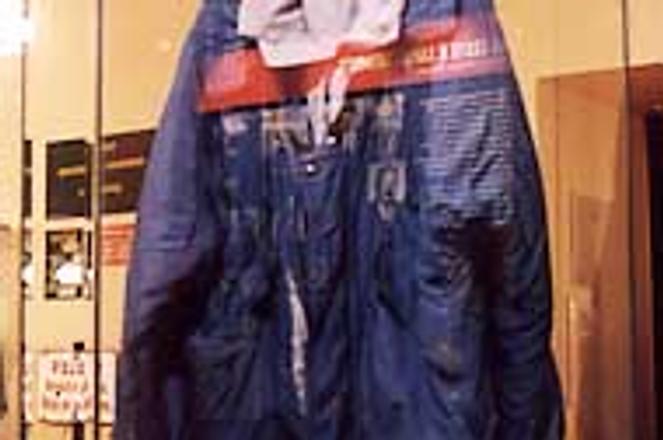JÁN Budaj's coat and famous hat.photo: Brian Jones
THE ORGANISERS of Slovakia's 20th Century Milestones called upon the public to donate, sell, or lend objects for this exhibition that marks the significant historical events of last century. They did this because the museum itself did not have many such objects, and it seemed likely that some ordinary people would still have a few in their possession.
"Unfortunately, this didn't quite work out because the individuals and antique shops that contacted us mostly offered art objects and not [ordinary] items connected to political events," says the exhibition's curator, Elena Kurincová.
By borrowing from the collections of other museums and by personally contacting people who have been key players in the history of the country, the curators of the exhibition were finally able to see their project reach fruition. Many photos, posters, items of clothing, and various other historical artefacts have been gathered to document the last 100 years of Slovakia's history; from the time when the country was a part of the Austro-Hungarian empire until it acquired its independence in 1993.
The first objects on display in the exhibition portray the ambitions of Slovak politicians in the Hungarian parliament. These include electoral flags and the private correspondence of the prominent Slovak statesman Milan Rastislav Štefánik. The next part recalls the first period of the Czechoslovak Republic, from 1918 to 1938, with documents such as the declaration of independence and election posters.
"The poster is the most common medium of the 20th century, both for information and for propaganda purposes. That's why there are so many in the exhibition. They best show the ideology of the [various regimes] and were often made by well-known artists of the particular era," Kurincová explains.
The section that covers the second world war and the Slovak State (1939-1945) includes objects that highlight the attributes of the country's new statehood, such as the text of the national anthem and the official greeting. A coat with a yellow Star of David on it, is used to remind visitors of the deportation of Slovak Jews to concentration camps. Another section is dedicated to the foreign resistance - when anti-Nazi activities in Slovakia were directed from the London-based Czechoslovak government-in-exile - and the 1944 Slovak National Uprising.
The years between 1945 and 1948 is the next era covered by the exhibition. This was when the communist regime began consolidating power and started 'building the socialist homeland', nationalizing all private property. Following this is the invasion of Czechoslovakia by Warsaw Pact forces in August 1968. The exhibition closes with the most recent events: the fall of the communist regime in November 1989 and the establishment of independent Slovakia in 1993.
"We also contacted the historical figures [who took part in these events], because some of them are still alive. They contributed rare documents and personal belongings. For example, Ján Budaj, one of the leaders of the Velvet Revolution in 1989, donated his jacket and his famous 'budajka' hat," the curator says.
The written information on the panels is rather brief, so some knowledge about Slovakia's past is required. Foreigners would benefit from taking a Slovak person with them to fill in the gaps.
The exhibition is on display at the Bratislava Castle through July, and is open daily except Mondays from 9:00 to 17:00. Admission is Sk30-60 and a guided tour in English costs Sk200. For more information or booking a tour call 02/5934-1626 or visit www.snm-hm.sk.


